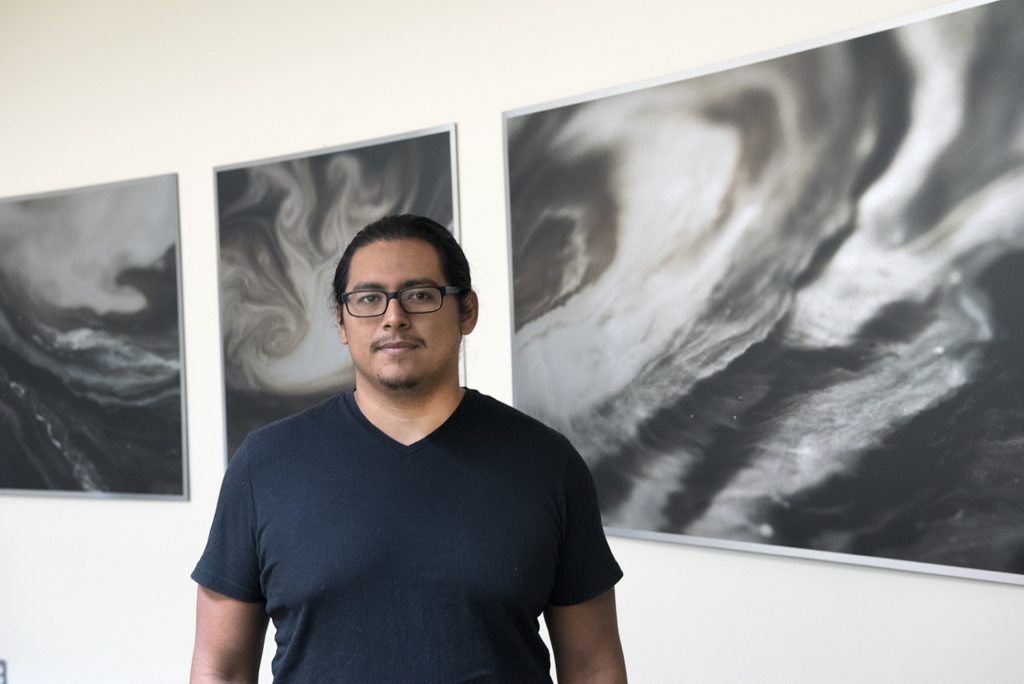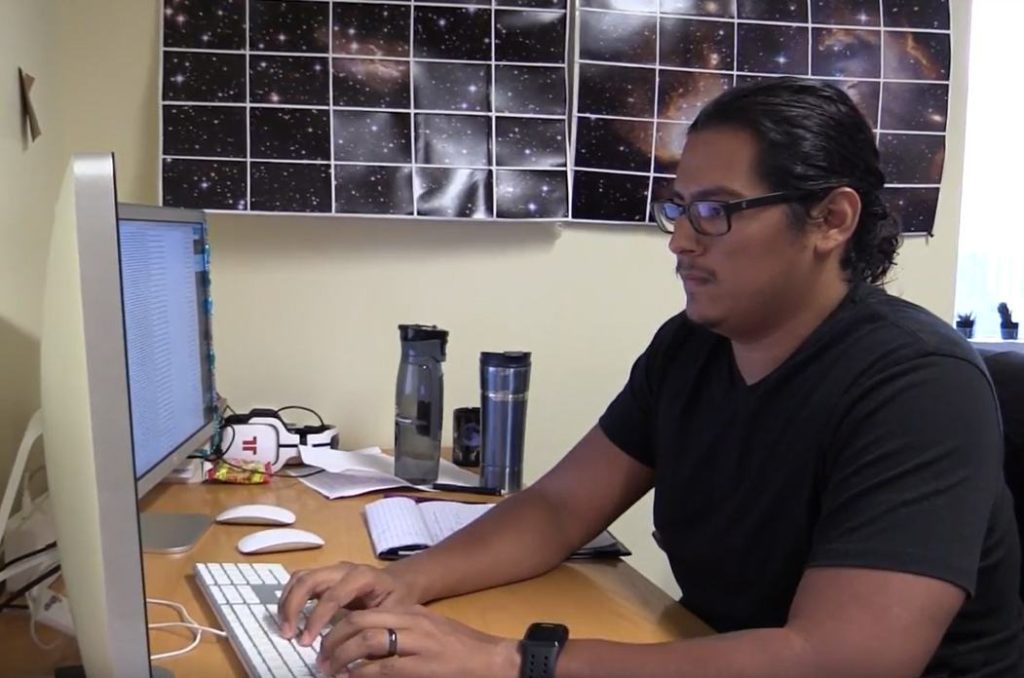Vince Estrada-Carpenter ’19 remembers watching a documentary about the origins of the universe and being a tad envious of the astronomers on his TV as they debated the cosmos.
Astronomers must have the most exciting job in the world, he thought. Why couldn’t he have a job like that?
“Then I thought, ‘Well, why can’t I?'” Estrada-Carpenter recalled. “I’m good at math, I’m good at science — I should try it.”
So he did. The rest is the history of his future, one spent looking into the universe’s past to explain its present.
Estrada-Carpenter is now a doctoral student in the Texas A&M University Astronomy Program, where his focus is observational cosmology as a member of Texas A&M astronomer Casey Papovich’s research group. As he begins his third year of graduate study within the George P. and Cynthia Woods Mitchell Institute for Fundamental Physics and Astronomy, Estrada-Carpenter is quickly closing in on a Ph.D. and the career of his dreams.
“Career-wise, I wanted to do something that I really enjoyed,” Estrada-Carpenter said. “Astronomy was the thing that if I could pick anything to do, it would be that.”
As a member of the Papovich group, Estrada-Carpenter investigates extragalactic astronomy — specifically, end-stage galaxy evolution when galaxies cease to form stars. Using images from the Hubble Space Telescope obtained through grism spectroscopy, in which a grating prism is placed in the light path of an imaging camera so that every object forms its own spectrum, Estrada-Carpenter is able to gather information that allows him to compare the properties of ancient galaxies as they go dormant.
“The farther you look back into space, the farther back into time you’re looking,” Estrada-Carpenter said. “So you look back a certain distance, you measure a bunch of galaxies and their parameters, and then you can trace through time how these galaxies have evolved. We’ve found that once a galaxy stops forming stars, the properties tend to remain the same.”
Estrada-Carpenter was completing his undergraduate studies at Southwestern University when he made the choice to pursue astronomy. Originally an accounting major, he realized the field didn’t suit him, and after a brief hiatus from academics to take a break and reassess his goals, he returned to finish with a degree in physics.
Choosing a graduate school, however, was a clear-cut decision despite offers from several prominent universities. Estrada-Carpenter says he was so impressed with the quality of research in the Texas A&M Department of Physics and Astronomy that he accepted an offer of admission without even visiting the campus.
“The research being done here was just so interesting,” Estrada-Carpenter said. “It wouldn’t be until a week later that I would actually come to the school to meet the professors and graduate students. I realized I made the right decision; the department here is great.”
Estrada-Carpenter says that being an astronomer is no walk in the space park. He spends hours upon hours poring through Hubble images and analyzing data. But he has no regrets.
“Even on the days it’s so difficult that my head hurts and it seems like I made no progress at all, I’m still able to push on and say that I still enjoy it,” Estrada-Carpenter said. “It’s kind of like a puzzle. You might get stuck sometimes, but when you finally solve it, it’s so enjoyable.”
###
This story by Chris Jarvis originally appeared on the College of Science website.







